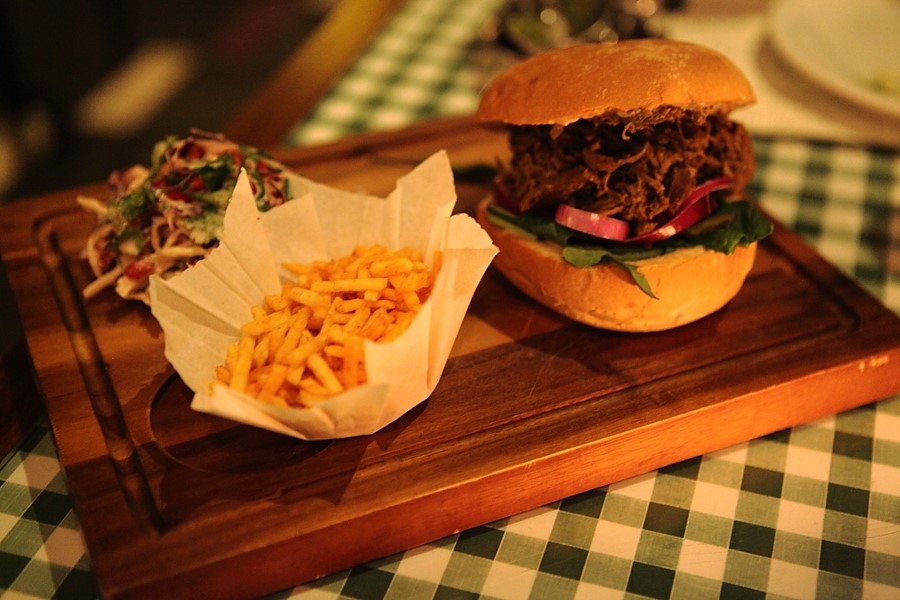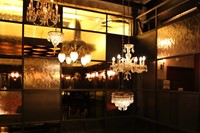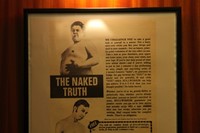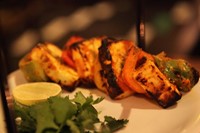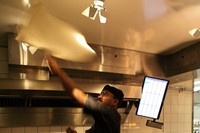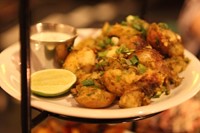Situated in a converted warehouse space on Redchurch Street, Dishoom’s interior pays homage to the Irani cafés run by Persian immigrants in old Bombay...
Situated in a converted warehouse space on Redchurch Street, Dishoom’s interior pays homage to the Irani cafés run by Persian immigrants in old Bombay. Known for their all-day menus, multi-class clientele, and colonial kitsch, these eateries started appearing at the beginning of the 20th century in the Indian capital, though few remain today in modern Mumbai.
Aided by restaurant experts Russell Sage Studio, the Dishoom team made several trips to Mumbai to visit the last of the Irani cafés, in order to recreate their spirit in central London with a lux twist. Old clocks and posters, family portraits (the owners are two brothers and two cousins), ornately painted mirrors, and dark wood screens are all half-hidden by the dim lighting, while the space, though large, is broken up by cosy corners and comfortable booths.
The menu, created by head chef Naved Nasir, is inspired by everything from Mumbai street food to the stalls at Chaupati Beach, from family recipes to café classics. As we’re ordering, our waiter informs us that the kitchen “isn’t afraid of spice,” a statement that proves to be true – although heat here isn’t used as a substitute for complexity; the mixtures and sauces are delicate and intricate. All spices are roasted and ground in-house, and it’s obvious the meats are given ample time to marinate. A testament to this is the moist, spicy lamb raan bun with baby spinach, gherkins, and red onion. This is one of the house specialties and a crowd pleaser even for lamb refusniks. Another house specialty is the black daal: dark and mysterious, the dish is made with a secret blend of spices and simmered for over 24 hours. The result is a thick black bean stew with a meaty richness that intrigues with its combination of flavours.
"Our waiter informs us that the kitchen “isn’t afraid of spice,” a statement that proves to be true – although heat here isn’t used as a substitute for complexity."
Other highlights from our sharing plates dinner are the paneer tikka – giant pieces of soft cheese, which are expertly grilled to be crispy but still give way, okra fries made with a hearty helping of lemony tamarind, and the fried but still delicate skate cheeks koliwada, a recipe from Mumbai’s fishing district. An unexpected hit is the chicken berry Britannia, a biryani made with cranberries instead of raisins. The roti, which is made fresh in the Dishoom kitchen – you can watch them throw and stretch the dough – was the perfect vehicle for all our dishes, and enjoyable on its own.
Having designed a bespoke cocktail menu, the drinks at Dishoom reflect old Bombay drinking culture (with a nod to the city’s early Prohibition days). Our favourite was the aptly named Chilli Martini, a combination of gin, pomegranate, lemon juice and spicy Dishoom drizzle. Other delectable drinks are the light and refreshing East Indian gimlet with lime and celery bitters, and the subtly sweet Bollybellini, with prosecco, raspberries, lychee, rose and cardamom. From breakfast to closing time at the bar, Dishoom is serving up subcontinental nostalgia daily.
Text by Ananda Pellerin
Ananda Pellerin is a London-based writer and editor, and Neil Wissink is a visual artist also based in London. Read more from The Hunger here, and contact The Hunger here.
